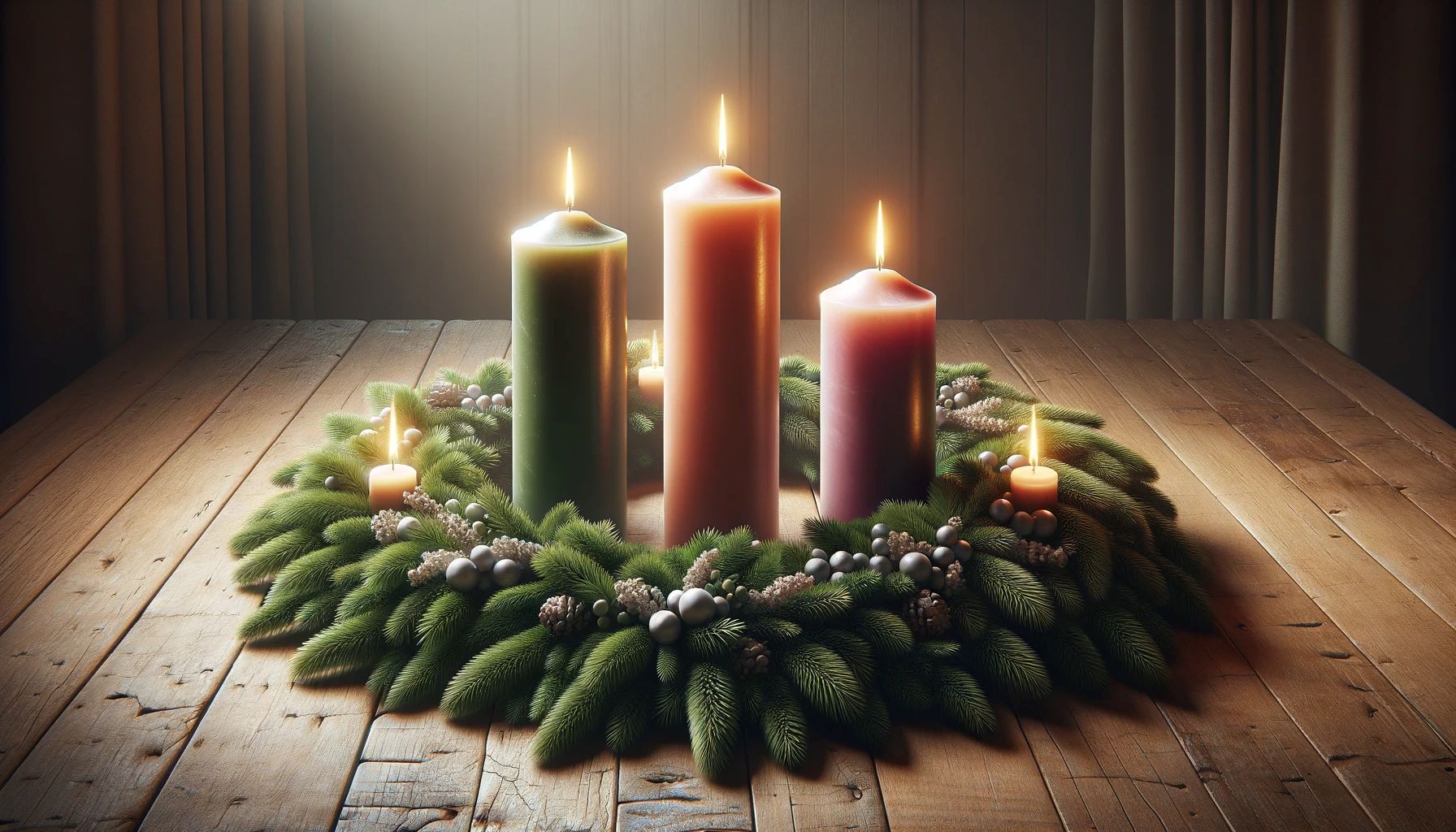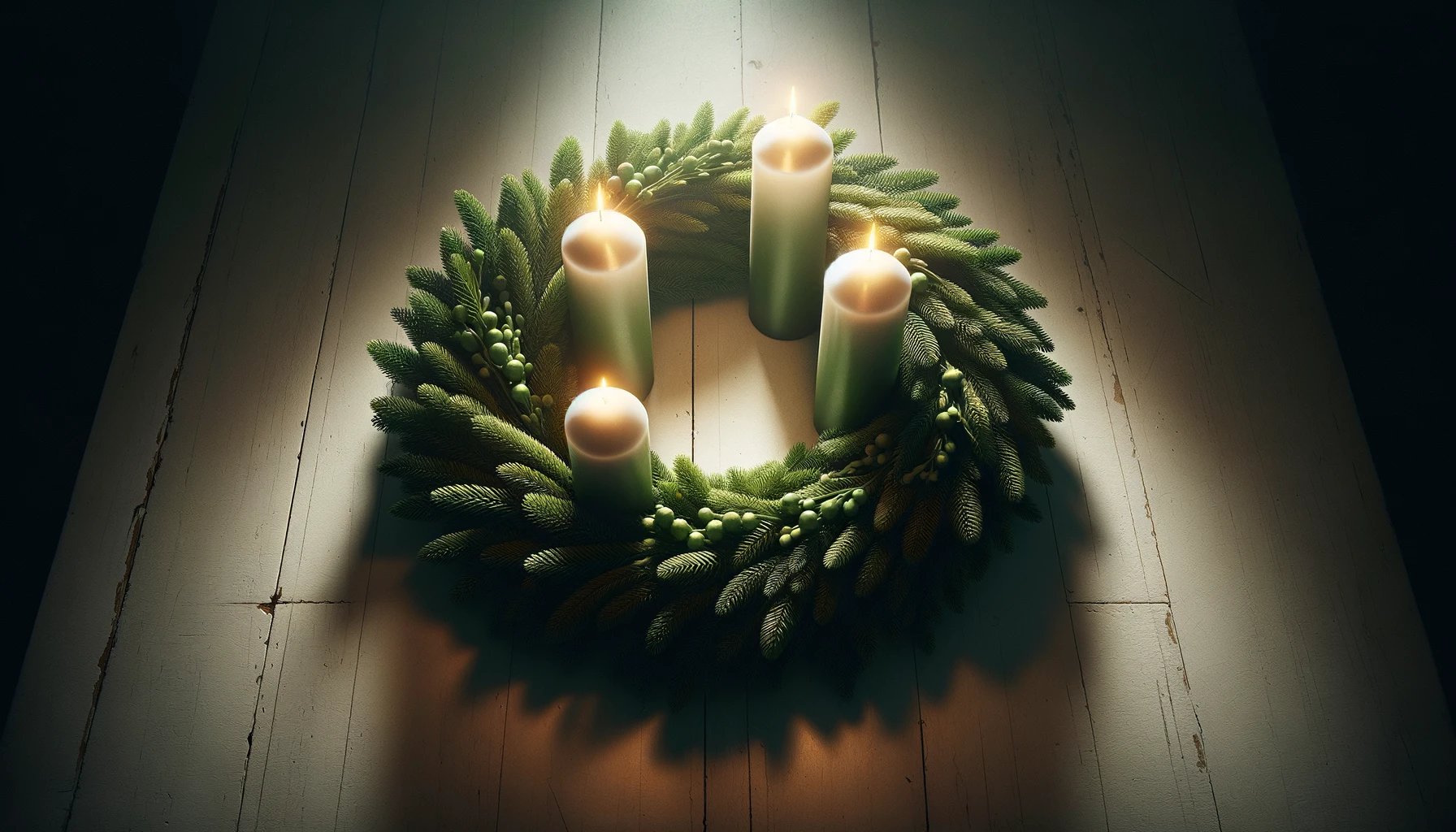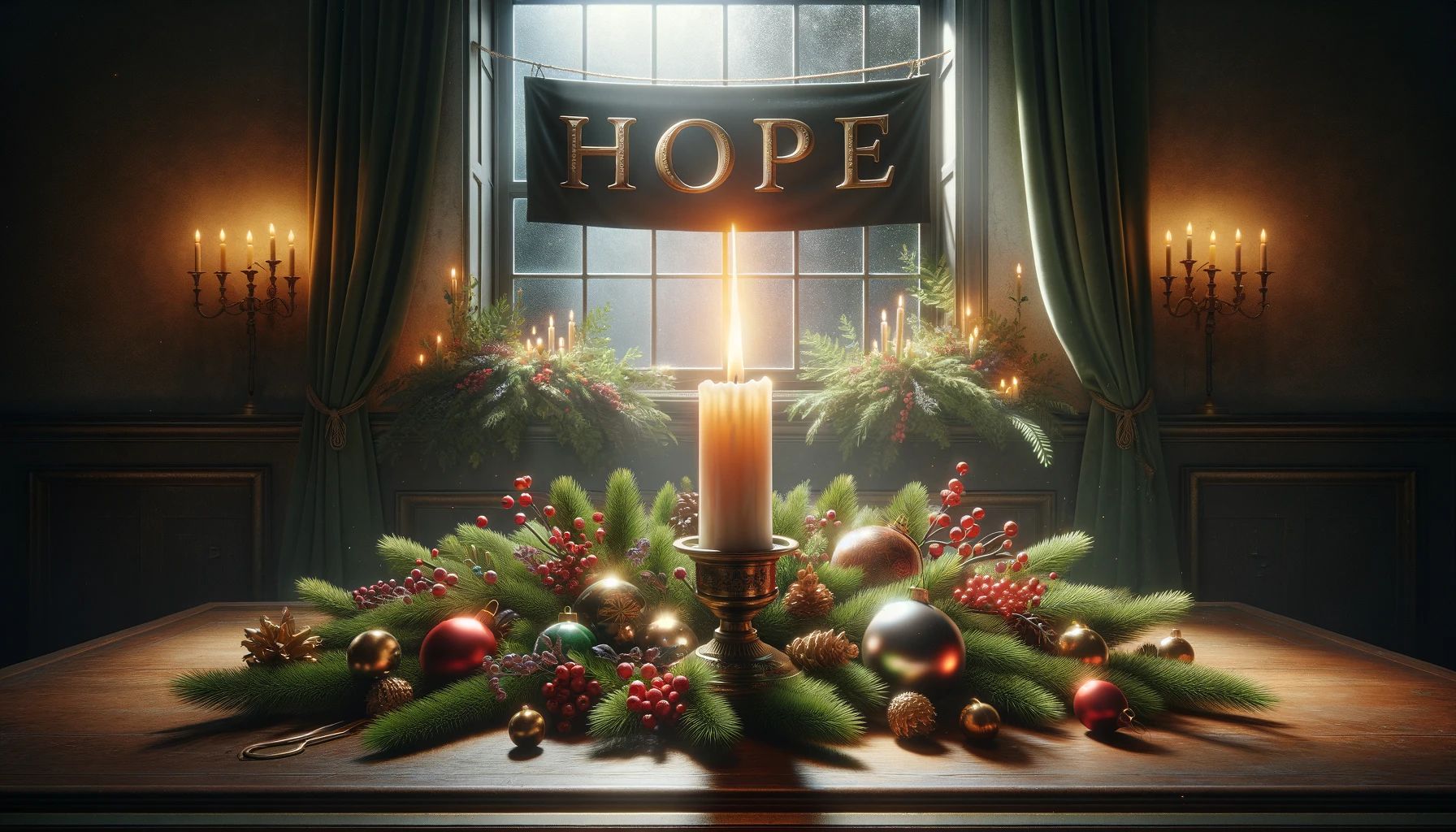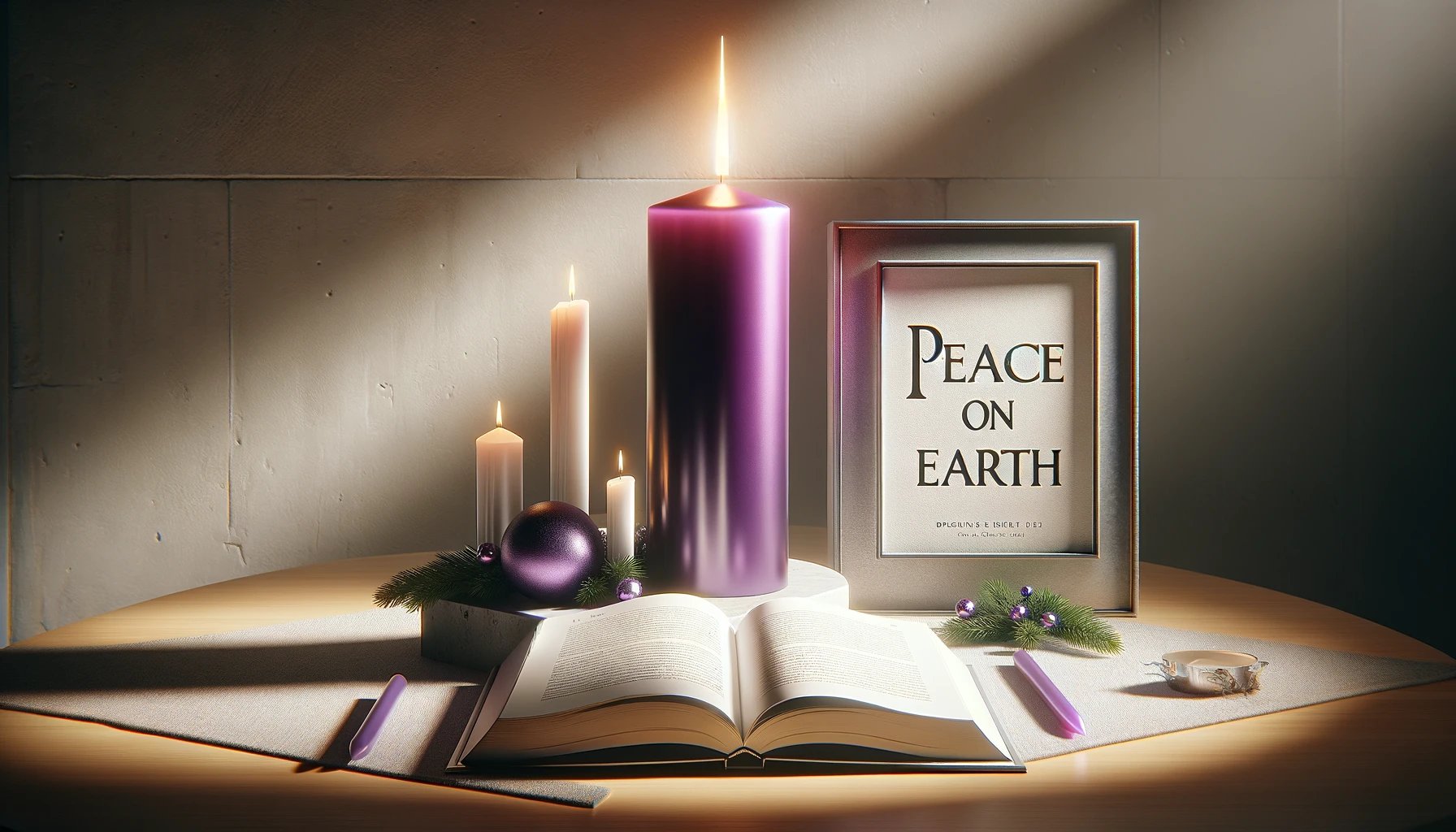Home>Special Themes>In What Order Are Advent Candles Lit
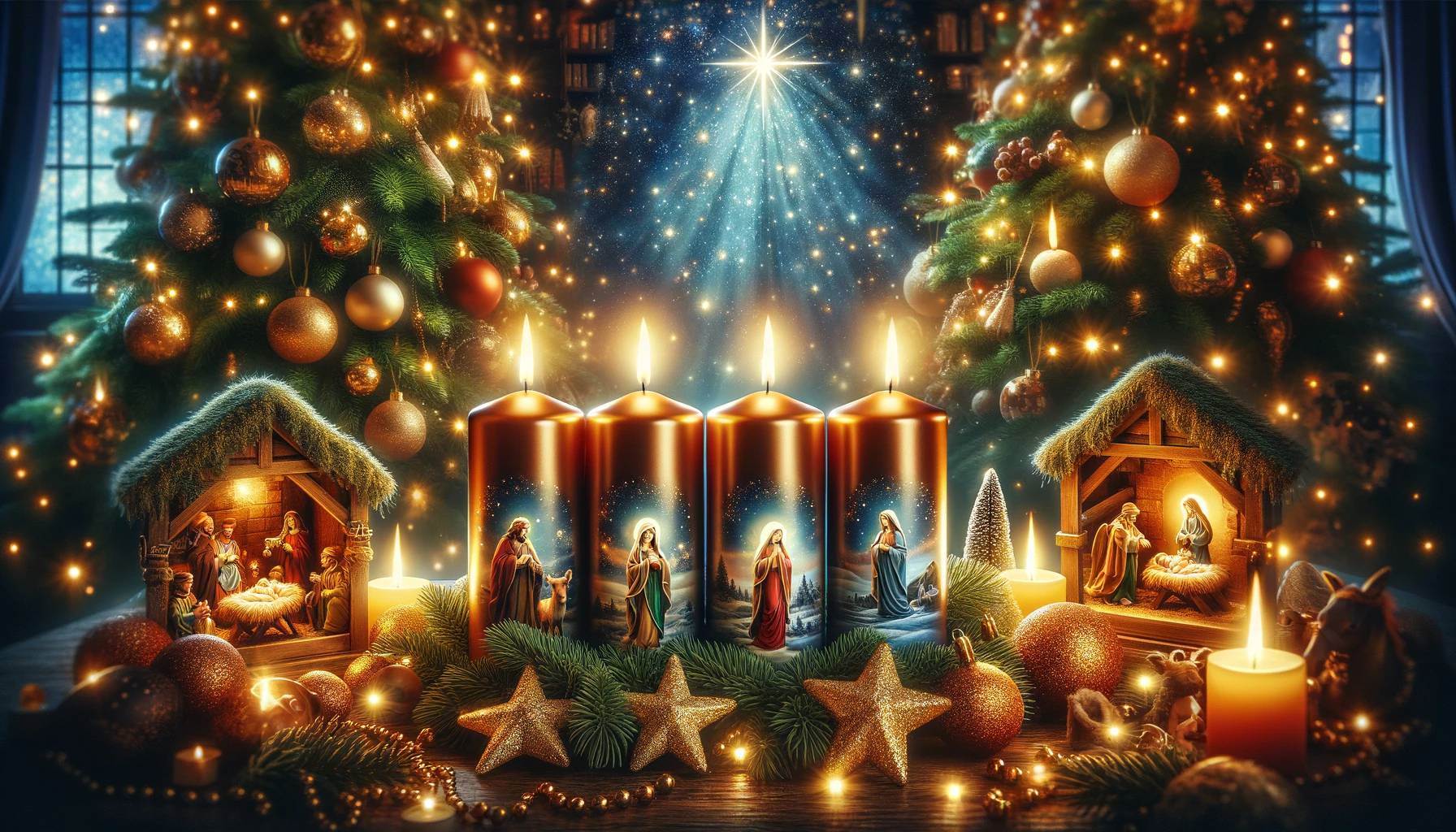

Special Themes
In What Order Are Advent Candles Lit
Published: February 14, 2024
Ericka Andersen, an editor at Christian.net, expertly merges digital strategy with content creation, focusing on faith and societal issues. Her communication skills enhance the platform's engaging narratives, fostering meaningful dialogue on belief's impact on society.
Discover the significance of the Advent wreath and the special themes associated with each candle as they are lit in this traditional Christian practice. Explore the order and meaning of the Advent candles.
(Many of the links in this article redirect to a specific reviewed product. Your purchase of these products through affiliate links helps to generate commission for Christian.net, at no extra cost. Learn more)
Table of Contents
Introduction
Advent, a season of anticipation and preparation, is a cherished time for many Christians around the world. It marks the beginning of the liturgical year and is observed in various ways, including the lighting of Advent candles. These candles hold profound symbolism and are an integral part of the Advent tradition, serving as a visual representation of the spiritual journey towards the celebration of Christ's birth.
The lighting of Advent candles is a time-honored custom that dates back centuries, carrying with it a rich tapestry of history, symbolism, and tradition. As we delve into the significance and order of lighting these candles, we embark on a journey that transcends time and connects us to the enduring legacy of faith and hope.
The act of lighting Advent candles is not merely a ritual; it is a poignant reminder of the profound spiritual truths that underpin the Advent season. Each candle represents a distinct facet of the Advent narrative, and the sequential lighting of these candles serves as a poignant visual representation of the progression towards the joyous celebration of Christmas.
As we explore the history, symbolism, and traditions associated with Advent candles, we gain a deeper understanding of the profound significance they hold for millions of people worldwide. The timeless ritual of lighting Advent candles serves as a beacon of hope, illuminating the path towards the celebration of the birth of Jesus Christ.
In the following sections, we will embark on a captivating journey through the history, symbolism, and traditions of Advent candles, unraveling the profound meaning behind their sequential lighting and the diverse customs associated with this cherished practice. Join us as we delve into the heartwarming traditions that have enriched the Advent season for generations, and discover the timeless significance of the order in which Advent candles are lit.
Read more: What Is The Order For The Advent Candles
History of Advent Candles
The history of Advent candles traces back to the early 19th century in Germany, where the concept of using candles to mark the weeks leading up to Christmas emerged. Initially, a large candle was lit on Sundays as a countdown to Christmas. However, it was not until the 20th century that the modern Advent wreath, adorned with four candles, became a widespread tradition.
The Advent wreath, with its four candles, gained popularity as a symbol of the four weeks of Advent. Each candle represents a week, and the lighting of a new candle on each Sunday symbolizes the progression through the season of anticipation and spiritual preparation for the birth of Jesus Christ.
The tradition of using evergreen branches to form the circular Advent wreath is believed to have originated in pre-Christian Germanic pagan rituals, symbolizing the eternal cycle of life. Over time, this custom was seamlessly integrated into Christian practices, signifying the everlasting life found in Christ.
The use of candles in religious ceremonies has a deep-rooted history in Christian traditions, symbolizing the light of Christ illuminating the darkness. The Advent candles, often arranged in a circular wreath, serve as a visual representation of the passage of time and the increasing anticipation of the birth of Jesus.
As the tradition of Advent candles spread throughout Europe and beyond, variations in the symbolism and customs associated with the candles emerged. Different denominations and regions developed unique practices, adding depth and diversity to the observance of Advent.
The history of Advent candles is a testament to the enduring significance of this tradition in Christian communities worldwide. It serves as a poignant reminder of the timeless journey of faith and hope that transcends generations, uniting believers in a shared anticipation of the joyous celebration of Christmas.
The evolution of Advent candles from a simple countdown to a profound symbol of spiritual preparation reflects the enduring legacy of faith and the universal longing for the light of Christ to illuminate the world. This rich historical tapestry underscores the profound significance of the order in which Advent candles are lit, inviting us to embrace the timeless traditions that have enriched the Advent season for centuries.
Symbolism of Advent Candles
The symbolism of Advent candles is deeply rooted in the spiritual significance of the Advent season, serving as a visual representation of the journey towards the celebration of Christ's birth. Each element of the Advent candles, from their colors to the act of lighting them, carries profound symbolism that resonates with the core themes of hope, love, joy, and peace.
The first candle, often purple or blue, represents hope and is known as the "Prophet's Candle." It symbolizes the anticipation of the Messiah's coming, echoing the hope and longing of the Old Testament prophets for the arrival of the Savior. As this candle is lit on the first Sunday of Advent, it ignites a sense of eager expectation, reminding believers of the hope found in Christ's imminent arrival.
The second candle, also purple or blue, represents love and is referred to as the "Bethlehem Candle." It signifies the love of God manifested in the incarnation of Jesus Christ. As this candle is lit on the second Sunday of Advent, it serves as a poignant reminder of the profound love that compelled God to enter the world in human form, bringing light and salvation to humanity.
The third candle, often pink or rose, symbolizes joy and is known as the "Shepherd's Candle." It embodies the joyous proclamation of the angels and shepherds at the birth of Jesus, heralding the arrival of the long-awaited Messiah. Lit on the third Sunday of Advent, this candle infuses the season with a sense of jubilation, inviting believers to rejoice in the imminent fulfillment of God's promise.
The fourth candle, typically purple or blue, represents peace and is called the "Angel's Candle." It symbolizes the peace brought by the Prince of Peace, Jesus Christ, whose birth heralds reconciliation between God and humanity. As this candle is lit on the fourth Sunday of Advent, it evokes a profound sense of tranquility, reminding believers of the peace that surpasses all understanding, found in the person of Jesus Christ.
In some traditions, a fifth white candle, known as the "Christ Candle," is placed in the center of the Advent wreath. This candle is lit on Christmas Eve or Christmas Day, signifying the culmination of the Advent journey and the arrival of Christ, the Light of the World.
The symbolism of Advent candles transcends cultural and denominational boundaries, uniting believers in a shared journey of spiritual preparation and anticipation. As these candles are sequentially lit throughout the Advent season, they serve as a poignant reminder of the timeless truths and profound significance of the birth of Jesus Christ, infusing the season with hope, love, joy, and peace.
The order in which Advent candles are lit reflects the progression of the season, guiding believers through a transformative spiritual journey that culminates in the joyous celebration of Christmas. This symbolic ritual not only enriches the Advent season but also serves as a powerful testament to the enduring message of hope, love, joy, and peace found in the birth of Jesus Christ.
The Order of Lighting Advent Candles
The order of lighting Advent candles holds profound significance, symbolizing the progression through the four weeks of Advent and the anticipation of the birth of Jesus Christ. Each candle, with its distinct symbolism, is sequentially lit on the four Sundays leading up to Christmas, guiding believers through a transformative spiritual journey.
On the first Sunday of Advent, the Prophet's Candle, representing hope, is lit. This act serves as a poignant reminder of the anticipation and longing for the Messiah's arrival, echoing the hope expressed by the prophets of the Old Testament. The flickering flame of the first candle illuminates the path of eager expectation, igniting a sense of hope and anticipation in the hearts of believers as they embark on the Advent season.
The following Sunday, the Bethlehem Candle, symbolizing love, is lit alongside the Prophet's Candle. This dual illumination serves as a powerful testament to the profound love of God manifested in the incarnation of Jesus Christ. The intertwining flames of hope and love infuse the season with a sense of divine affection and compassion, drawing believers closer to the heart of the Christmas narrative.
As the third Sunday of Advent dawns, the Shepherd's Candle, representing joy, is added to the glowing ensemble. The triad of candles, now radiating hope, love, and joy, fills the air with a palpable sense of jubilation. The joyous proclamation of the angels and shepherds at the birth of Jesus resounds through the lighting of the third candle, inviting believers to rejoice in the imminent fulfillment of God's promise.
Finally, on the fourth Sunday of Advent, the Angel's Candle, symbolizing peace, joins the luminous quartet. The gentle glow of the fourth candle evokes a profound sense of tranquility, reminding believers of the peace brought by the Prince of Peace, Jesus Christ. The harmonious interplay of hope, love, joy, and peace encapsulates the essence of the Advent season, guiding believers towards the culmination of their spiritual journey.
The sequential lighting of Advent candles not only marks the passage of time but also serves as a poignant visual representation of the spiritual progression towards the celebration of Christmas. As the flickering flames intertwine, they weave a narrative of hope, love, joy, and peace, inviting believers to embrace the timeless truths embodied in the birth of Jesus Christ.
This symbolic ritual, steeped in rich tradition and profound symbolism, enriches the Advent season, infusing it with a sense of anticipation, reverence, and spiritual contemplation. The order in which Advent candles are lit serves as a timeless reminder of the enduring message of hope, love, joy, and peace found in the birth of Jesus Christ, inviting believers to embark on a transformative journey of faith and anticipation.
Different Traditions of Lighting Advent Candles
The tradition of lighting Advent candles is observed with diverse customs and variations across different Christian denominations and cultural contexts. These unique traditions add depth and richness to the Advent season, reflecting the multifaceted tapestry of faith and heritage. From the colors of the candles to the specific rituals associated with their lighting, each tradition offers a distinct perspective on the spiritual significance of Advent.
In some traditions, the Advent wreath consists of three purple candles and one pink candle, with the center Christ Candle being white. The purple candles symbolize the themes of hope, love, and peace, while the pink candle represents joy. This color scheme reflects a nuanced interpretation of the Advent journey, emphasizing the emotional and spiritual nuances of the season.
In other traditions, the Advent wreath may feature four white candles, each representing the purity and light of Christ. This variation underscores the centrality of Christ's presence in the Advent narrative, emphasizing the profound spiritual significance of His impending birth.
Certain cultural traditions incorporate regional customs and practices into the lighting of Advent candles, infusing the ritual with unique symbolism and expressions of faith. For example, in some communities, the lighting of the Advent candles is accompanied by specific hymns, prayers, or readings that are deeply rooted in local traditions and folklore.
In some denominations, the order of lighting the Advent candles may vary, with the emphasis placed on different aspects of the Advent narrative. While the overarching themes of hope, love, joy, and peace remain constant, the specific nuances of each tradition offer a diverse tapestry of interpretations that enrich the collective experience of the Advent season.
The act of lighting Advent candles may also be accompanied by additional rituals or gestures, such as the involvement of children in the lighting ceremony or the incorporation of symbolic elements that resonate with the cultural and historical context of the community.
These diverse traditions of lighting Advent candles serve as a testament to the universal significance of the Advent season while honoring the unique cultural and spiritual heritage of each community. The variations in the customs and symbolism associated with the lighting of Advent candles underscore the enduring relevance of this timeless tradition, inviting believers to embark on a collective journey of faith and anticipation.
The rich tapestry of traditions surrounding the lighting of Advent candles reflects the universal longing for spiritual renewal and the celebration of the birth of Jesus Christ. As believers across the globe gather around the glowing Advent wreaths, they are united in a shared anticipation of the timeless message of hope, love, joy, and peace that transcends cultural and denominational boundaries.
Read more: What Is The First Candle Lit In Advent
Conclusion
The timeless tradition of lighting Advent candles is a poignant reminder of the enduring message of hope, love, joy, and peace found in the birth of Jesus Christ. As we conclude our exploration of the history, symbolism, and traditions associated with Advent candles, we are reminded of the profound significance of this cherished practice in enriching the Advent season for millions of people worldwide.
The sequential lighting of Advent candles serves as a visual representation of the spiritual journey towards the celebration of Christmas, guiding believers through a transformative experience of anticipation, reverence, and contemplation. Each candle, with its distinct symbolism, infuses the season with a sense of eager expectation, divine love, jubilation, and profound tranquility, encapsulating the essence of the Advent narrative.
The history of Advent candles, rooted in centuries-old traditions and customs, reflects the enduring legacy of faith and the universal longing for the light of Christ to illuminate the world. From its humble origins in Germany to its widespread adoption across diverse cultural and denominational contexts, the tradition of Advent candles has transcended time and geography, uniting believers in a shared journey of spiritual preparation and anticipation.
The symbolism of Advent candles, intricately woven into the fabric of the Advent season, resonates with the core themes of hope, love, joy, and peace, offering believers a profound connection to the timeless truths embodied in the birth of Jesus Christ. The act of lighting these candles not only marks the passage of time but also serves as a poignant reminder of the enduring message of the Christmas narrative, inviting believers to embrace the transformative power of faith and anticipation.
The diverse traditions of lighting Advent candles, each offering a unique perspective on the spiritual significance of the season, reflect the universal longing for spiritual renewal and the celebration of the birth of Jesus Christ. As believers across the globe gather around the glowing Advent wreaths, they are united in a shared anticipation of the timeless message that transcends cultural and denominational boundaries.
In conclusion, the order in which Advent candles are lit, the rich symbolism they embody, and the diverse traditions associated with their lighting underscore the enduring relevance of this timeless tradition. It serves as a powerful testament to the enduring message of hope, love, joy, and peace found in the birth of Jesus Christ, inviting believers to embark on a collective journey of faith and anticipation, enriching the Advent season with profound meaning and spiritual significance.
